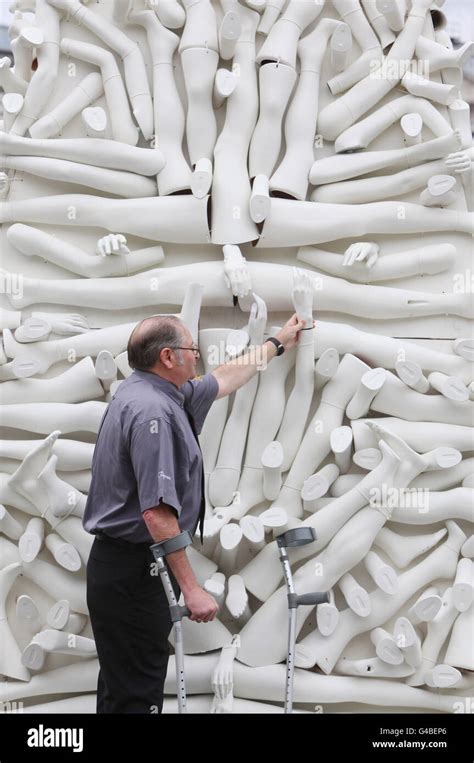Introduction

Mannequins, those ubiquitous fixtures in retail stores, often reside in vast, unseen storage facilities when not gracing store displays. These warehouses hold a treasure trove of mannequins, numbering in the thousands, awaiting their next deployment. In this article, we delve into the intriguing world of mannequin storage, exploring the vast numbers, diverse applications, and untapped potential of these silent companions.
The Scale of Mannequin Storage
The sheer volume of mannequins in storage is staggering. According to the National Retail Federation (NRF), an estimated 5,000 mannequins are stored in warehouses across the United States alone. This number continues to grow as retailers seek to keep pace with changing consumer trends and refresh their store displays.
Diverse Applications of Mannequins
While their primary purpose is to showcase clothing and accessories, mannequins have evolved to serve a wide range of other applications, including:
- Fashion Photography: Mannequins provide a consistent and professional foundation for capturing product shots.
- Medical Education: Medical mannequins simulate human anatomy for training medical professionals.
- Art Installations: Mannequins have found their place in contemporary art exhibits, conveying messages and exploring themes of identity and the human form.
- Home Decor: Vintage or unique mannequins can add a touch of whimsy or sophistication to home interiors.
- Event Displays: Mannequins create eye-catching displays at trade shows, exhibitions, and special events.
Unlocking the Hidden Potential of Mannequins
Beyond their traditional uses, mannequins offer untapped potential for creative and innovative applications. One emerging trend is the use of “mannequification” in immersive experiences. By equipping mannequins with sensors and actuators, they can interact with visitors, providing personalized experiences and enhancing engagement.
Common Mistakes to Avoid in Mannequin Storage
To ensure the longevity and optimal performance of mannequins in storage, it is crucial to avoid the following common mistakes:
- Improper Handling: Handle mannequins with care to prevent damage to delicate parts, such as heads, hands, and joints.
- Exposure to Elements: Store mannequins in a climate-controlled environment to protect them from extreme temperatures, humidity, and sunlight.
- Lack of Cleaning: Regularly clean mannequins to remove dust, grime, and spills.
- Overcrowding: Avoid overcrowding storage spaces to prevent damage from collisions and pressure.
- Lack of Inventory Management: Maintain an accurate inventory system to track mannequin count and availability.
Pros and Cons of Mannequin Storage
Pros
- Cost savings: Storage costs are typically lower than purchasing new mannequins.
- Flexibility: Mannequins can be easily removed from storage and deployed as needed.
- Space efficiency: Stored mannequins occupy less space than displaying them in stores.
- Preservation: Storage provides a protected environment for mannequins, extending their lifespan.
Cons
- Potential for damage: Inadequately stored mannequins may incur damage during handling and storage.
- Cost of maintenance: Cleaning, repairs, and inventory management can add to storage costs.
- Access constraints: Retrieving mannequins from storage may require additional handling and coordination.
Frequently Asked Questions
1. How long can mannequins be stored?
With proper care and storage conditions, mannequins can last for many years.
2. What is the average cost of storing a mannequin?
Storage costs vary depending on facility fees, location, and the number of mannequins stored.
3. Can mannequins be customized before storage?
Yes, mannequins can be customized with paint, accessories, or branding before storage.
4. How often should mannequins be cleaned?
Mannequins should be cleaned regularly, at least once every 3-6 months.
5. What materials are commonly used in mannequins?
Mannequins are typically made from fiberglass, plastic, or resin.
6. Can mannequins be used for online retail?
Yes, mannequins can be used for product photography and virtual try-on experiences in online retail.
7. What are the key trends in mannequin storage?
Emerging trends include digital inventory management, climate-controlled storage facilities, and the adoption of mannequification in immersive experiences.
8. What are the best practices for managing a mannequin storage facility?
Best practices include maintaining accurate inventory, ensuring proper handling, providing climate control, and investing in regular cleaning and maintenance.
Conclusion
The world of mannequin storage is vast and multifaceted, with thousands of mannequins residing in hidden facilities across the globe. These silent companions serve a diverse range of applications, from fashion displays to medical education and home decor. While they may not always be visible to customers, mannequins play a crucial role in the retail and creative industries. By understanding the scale, applications, and best practices of mannequin storage, we can unlock the full potential of these ubiquitous fixtures, empowering retailers, artists, and innovators alike to create captivating and engaging experiences.
